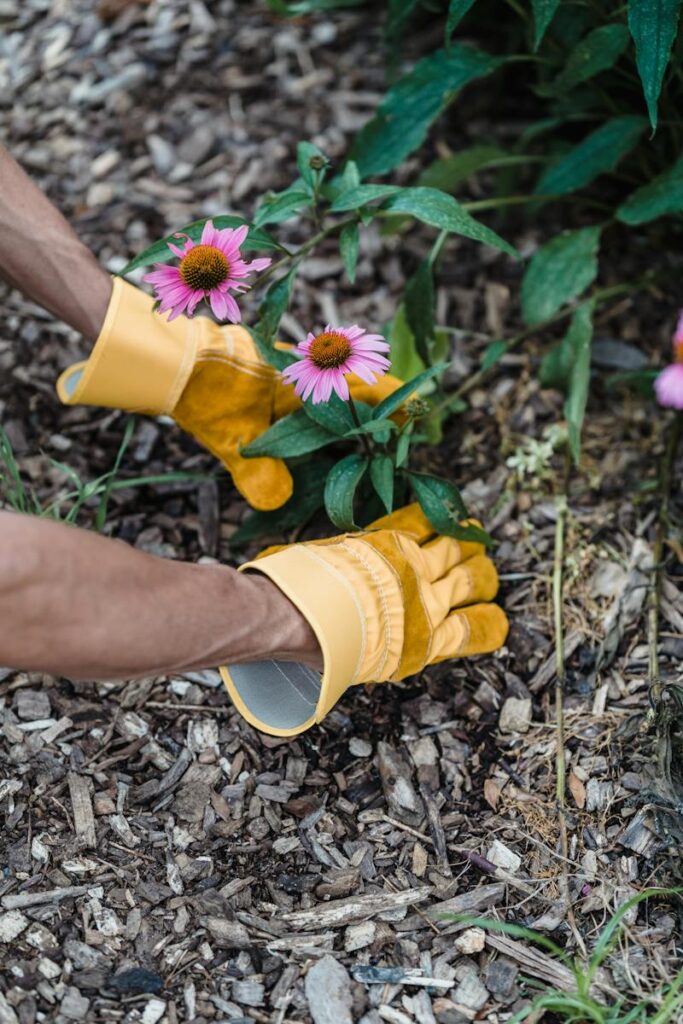What is Conservation Gardening?
In the face of increasing environmental challenges, a new gardening trend is taking root: Conservation Gardening. This practice, which involves planting declining native species in urban and rural green spaces, is gaining traction as a viable solution to address plant biodiversity losses.
What is Conservation Gardening?
A conservation landscape, or a conservation garden, is a garden designed to improve water quality, promote and preserve native species, and provide wildlife habitat. It replaces the hard surfaces or turf grass of a traditional lawn with native plants. The result? A garden that not only adds aesthetic value to your space but also contributes positively to the environment.
The Benefits
Conservation gardening offers numerous social and environmental benefits. Here are some key advantages:
- Environmental Impact: Conservation gardens are designed to benefit the environment and function efficiently for human use. They promote healthy air quality, conserve and clean water, and promote healthy soils.
- Biodiversity: These gardens use locally native plants that are appropriate for site conditions, promoting and preserving native species.
- Wildlife Habitat: Conservation gardens provide a habitat for wildlife, attracting a variety of birds and pollinators.
- Resource Management: Conservation gardens are managed to conserve energy, reduce waste, and eliminate or minimize the use of pesticides and fertilizers.
Implementing Conservation Gardening
Interested in starting your own conservation garden? Here are some steps to get you started:
- Design: Plan your garden using landscape design principles. Consider the site conditions and choose a design that will be both aesthetically pleasing and environmentally beneficial.
- Plant Selection: Choose native plants that will bring beauty and ecological function to your landscape. Consider a variety of perennials, shrubs, and trees.
- Installation: Prepare your garden bed, build your soil, and plant your chosen species. Consider the best times and techniques for planting.
- Maintenance: Implement best practice techniques for caring for your garden. This includes weeding, mulching, and seasonal maintenance.
Conservation gardening is more than just a trend; it’s a movement towards a greener future. By embracing this practice, we can each play a part in preserving our planet’s biodiversity and promoting a healthier environment. So why not start your conservation garden today?

"When we garden — especially organically — we improve the air and the soil quality."

Techniques
Conservation gardening combines organic gardening practices with resource conservation. Here are some techniques you can adopt:
- Work with Nature: Sustainable gardening works with nature instead of against it.
- Improve Soil Health: Healthy soils produce healthy plants. Healthy soil is full of organisms that turn organic matter and minerals into vital plant nutrients.
- Water Efficiency: Drinking water is a precious resource that, in many parts of the country, is in short supply.
- Support Wildlife: Supporting a natural ecosystem is something that home gardeners can do to combat loss of plant and animal species.
- Plant Selection: Native plants are adapted to the local climate and soil conditions where they naturally occur.
Impact of Conservation Gardening on Environment
Gardening is a way of improving the environment we live in via the addition of plants, flowers, fruits, and vegetables. When we garden — especially organically — we improve the air and the soil quality. We are growing our own food, beautifying our space, and instead of taking something away from the natural world, we are adding and tending to something green and beautiful.
- Cleans the Air and Soil: Plants take in carbon dioxide from the atmosphere and produce oxygen as a byproduct of their respiratory and photosynthetic processes. Through this process, plants absorb any chemicals, bacteria, or harmful elements floating on the breeze, which they then filter into useful waste products like water and oxygen.
- Replenishes and Protects the Soil: Plant roots help bind soil together, making it less likely to wash away in heavy rains. Plant roots can also add moisture and nutrients to the soil.
- Mitigates Global Warming: Global warming is caused by too many greenhouse gases like carbon dioxide, trapping heat in the atmosphere. Over time, this warming contributes to widespread climate change, which can result in melting ice caps, rising sea levels, and increasingly severe storms and wildfires. Gardening can help mitigate global warming by reducing carbon emissions and increasing carbon storage in soil and plants.
Conservation gardening is a powerful tool in the fight against climate change. By adopting these practices, we can each make a difference in our own backyards and communities, and across the country. So why not start your conservation garden today and be a part of the solution to climate change? Let’s embrace the green revolution and make our world a better place for future generations.
